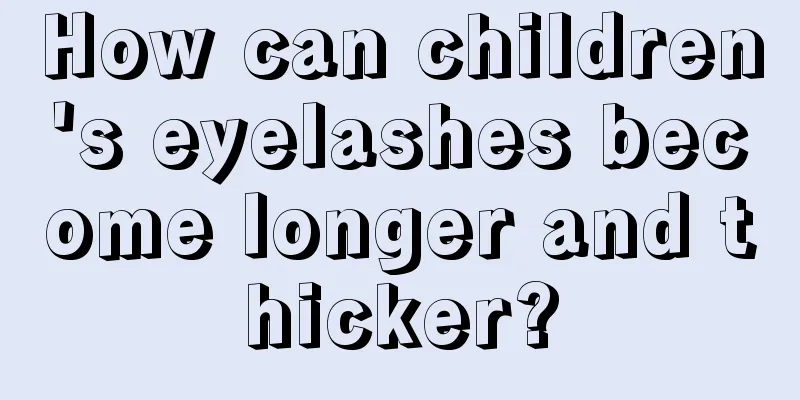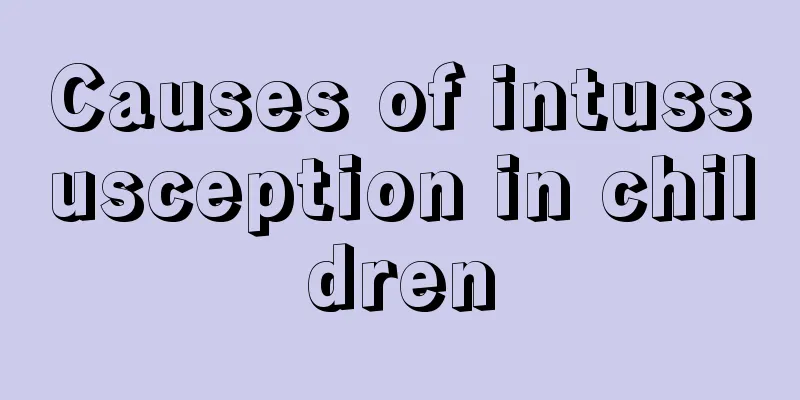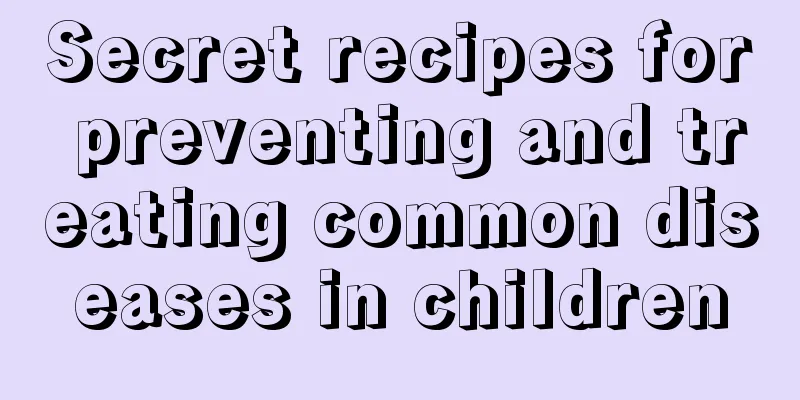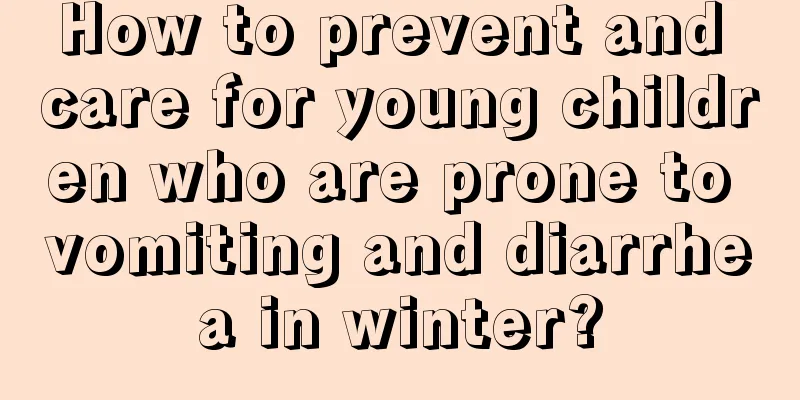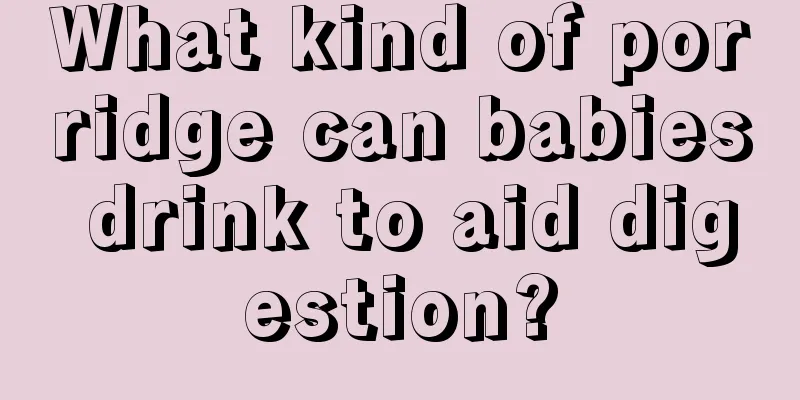What should parents do when a three-year-old child has repeated fevers?
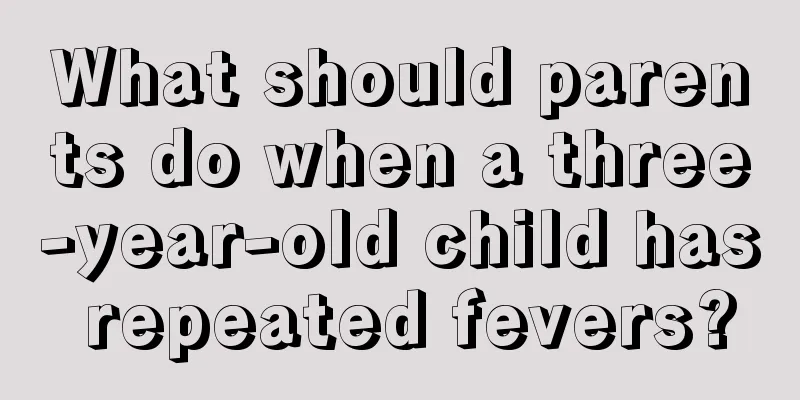
|
Do you parents know why three-year-old children have repeated fevers? Perhaps everyone is not very clear about the true concept and understanding of a three-year-old child having recurrent fever. What is the most appropriate thing to do when a three-year-old child has recurrent fever? Today I will give you a brief list! I hope this will help everyone understand this aspect, so that you don’t panic when your children have recurring fevers. 1. Why do three-year-old children have repeated fevers? Because children have poor ability to adapt to the external environment and their immune systems are not yet fully developed, any discomfort can easily lead to fever symptoms, or their body temperature may rise again quickly after taking medicine to reduce the fever. Especially in the hot summer, if parents use the air conditioner improperly or the baby drinks less water and cannot adapt to the high temperature weather, it will cause repeated fever. There are many causes of fever: mainly bacterial and viral invasion, which cause respiratory and gastrointestinal infections and lead to fever. What parents can do is to provide adequate nutrition according to the child's age and physical development, and add complementary foods in a timely, reasonable and balanced manner. Parents should be especially reminded that if the child has a fever for more than three consecutive days without improvement or the baby has a high fever or convulsions, they should seek medical attention in time to find out the cause and treat the symptoms. What to do if a 2- to 3-year-old child has a recurring fever Generally, if a child's fever is below 38.5 degrees, parents should adopt physical cooling methods, such as drinking more water, applying fever-reducing patches, etc., and do not abuse drugs. When a child's fever is above 38.5℃, it is best to give the child medication under the guidance of a doctor. If the body temperature is below 38.5℃, physical cooling is the preferred intervention. For example, applying a fever-reducing patch, drinking plenty of water, taking a warm bath, etc. can all help lower body temperature; infants and young children with a body temperature above 38.5 degrees need to be treated with medication; and those with a body temperature above 39 degrees Celsius need to be treated with medication under the guidance of a doctor. Currently, ibuprofen and paracetamol are commonly used antipyretics in clinical practice. Pay special attention to the dosage of the medicine and send the baby to the hospital for treatment in time. 3. What should a three-year-old child eat if he has a recurring fever? Only a balanced diet can enhance children's resistance and help them recover as quickly as possible. So, what should a three-year-old child eat if he has recurring fever? Parents can let their children take in a balanced amount of foods rich in nutrients such as protein, sugar, fat and minerals in their daily diet, and eat more easily digestible foods such as rice soup, mung bean soup and fresh fruit juice. Rice soup can provide children with carbohydrates. It has sufficient water content, making it easier for sick children to absorb it. Rice soup is obtained by boiling rice and removing the residue. Mung beans are benign and have the effects of clearing away heat, detoxifying and relieving summer heat. In summer, you can drink watermelon juice, which has the effects of clearing away heat, quenching thirst, and promoting diuresis; in autumn and winter, you can drink fresh pear juice, which has the effects of moistening the lungs, clearing the heart, relieving cough, and removing phlegm; fresh orange juice has the effects of removing dampness, resolving phlegm, clearing the lungs, and unblocking the meridians. In addition, let your children develop good eating habits. Picky eating and partial eating can easily lead to nutritional imbalance, weakened body resistance to disease, and make them susceptible to virus invasion. It is worth noting that liquid food is generally consumed during the acute phase of illness, and semi-liquid food is consumed during the recovery phase or fever-reducing phase. If a child with a fever has a poor appetite, do not force him to eat, so as to avoid stomach discomfort and vomiting after eating, but be sure to pay attention to replenishing water. In addition, do not suddenly add food that the child has not eaten before during the fever period to avoid diarrhea. Dear parents and friends, you must have a deep understanding of the recurring fever in three-year-old children! If your child has repeated fevers, please do not panic. You can take care of your baby according to the above methods. If you think the situation is very serious, please go to the hospital in time and follow the doctor's instructions. Remember not to "seek medical treatment randomly when you are sick." |
<<: Causes and prevention of yellowing of children's teeth
>>: Treatment for fever and headache in children
Recommend
Treatment of anemia in a one and a half year old child
Many children have recently developed symptoms of...
What should I do if my child stays in bed in the morning?
Many children have the habit of staying in bed in...
What can children with amblyopia eat to benefit their eyes?
Amblyopia exists during the development of childr...
What should children pay attention to before and after tooth extraction?
When children have their teeth extracted, local t...
When should children undergo phimosis treatment?
Genital development is very important, especially...
How long does it take to get menstruation after giving birth?
After giving birth, women must take comprehensive...
White spots on baby's body
Because newborn babies are delicate, special atte...
What to do if a child gets a fish bone stuck in his throat
Although fish tastes very delicious and is rich i...
What medicine is effective for children with cold and fever
When using medicines for children's colds and...
What to do if you have poor self-control
Poor self-control has a great impact on life, esp...
Why is the baby girl's vulva a little red?
Having a baby at home is the apple of the parents...
What to do if children have hand, foot and mouth disease
Everyone knows that hand, foot and mouth disease ...
What should parents do if their children have a fever or bacterial infection?
In many families of three today, children are at ...
How many times a day is normal for a baby to poop?
Every part of the baby's body deserves our at...
What to do if red spots appear on the baby's body
What should I do if red spots appear on my baby’s...


